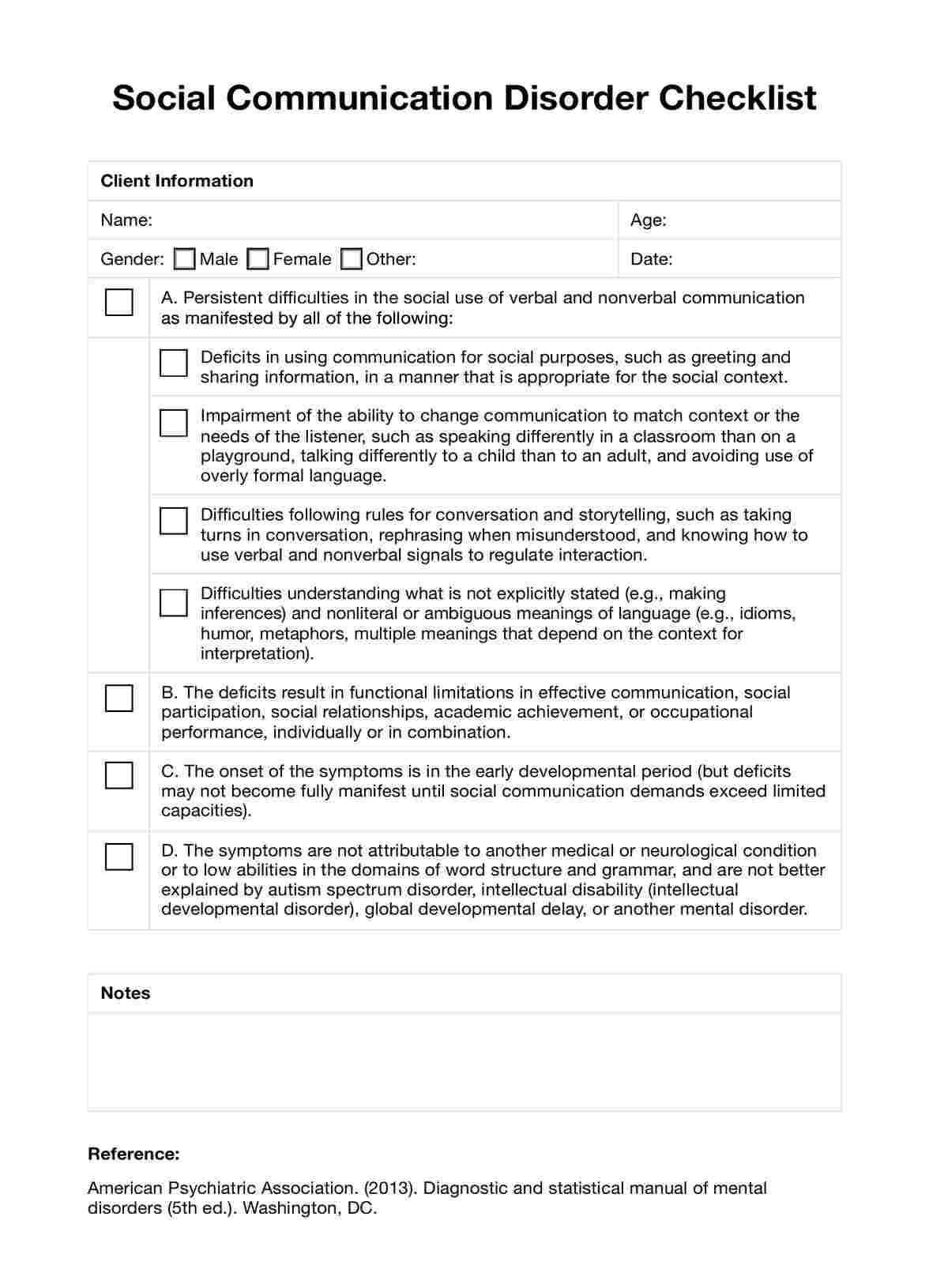While both SCD and ASD involve challenges with social communication, ASD also includes repetitive behaviors and restricted interests, which are not characteristics of SCD.

Social Communication Disorder Checklist PDF
Access a guided checklist to aid in diagnosing social communication disorder for earlier detection and intervention.
Use Template
Social Communication Disorder Checklist PDF Template
Commonly asked questions
Parents can help by engaging in interactive play, reading, and activities stimulating conversation and social interaction. Consistency, positive reinforcement, and collaboration with educators and therapists are crucial.
With appropriate intervention, individuals with SCD can significantly improve their communication skills. Early detection and tailored therapy are vital to maximizing progress and outcomes.
EHR and practice management software
Get started for free
*No credit card required
Free
$0/usd
Unlimited clients
Telehealth
1GB of storage
Client portal text
Automated billing and online payments











